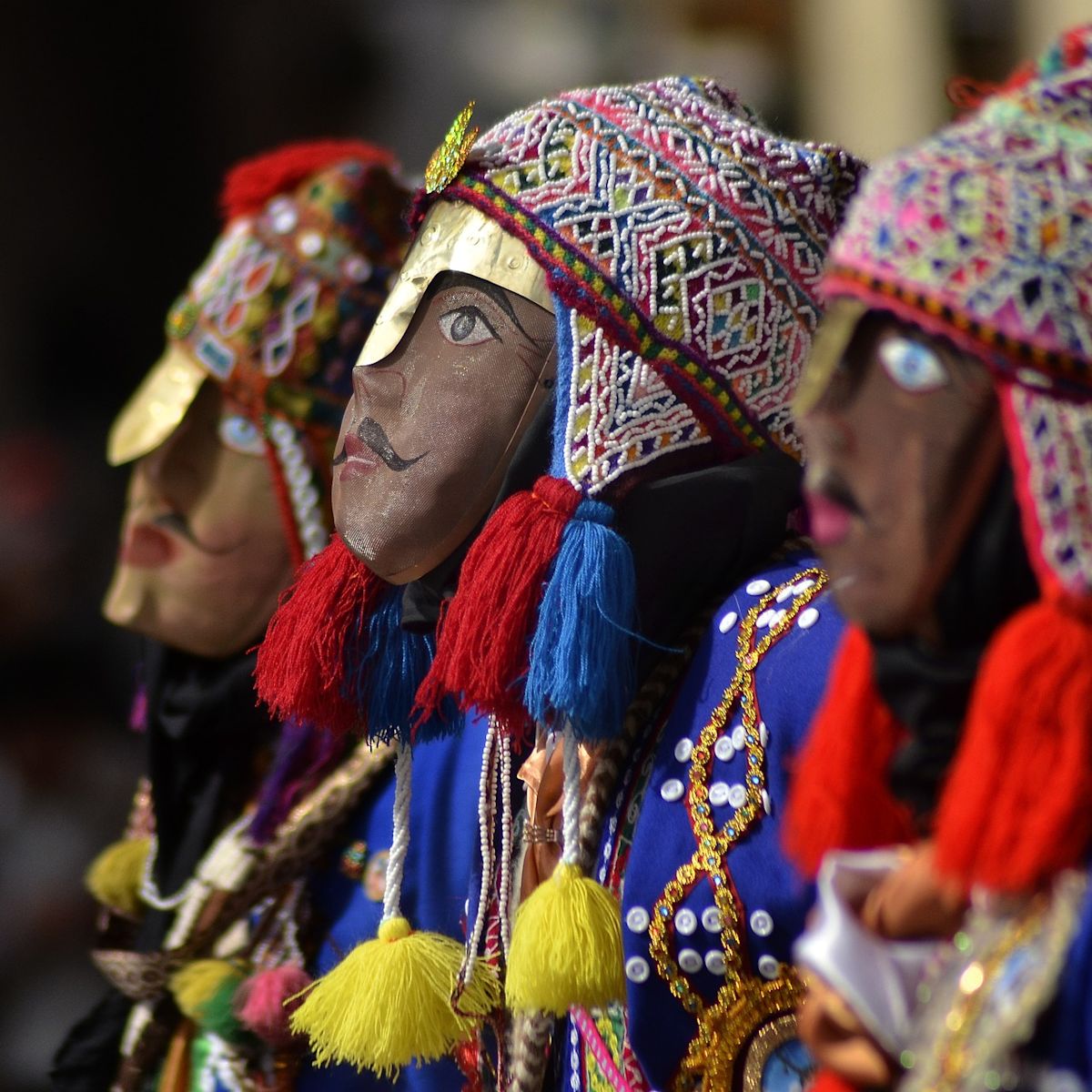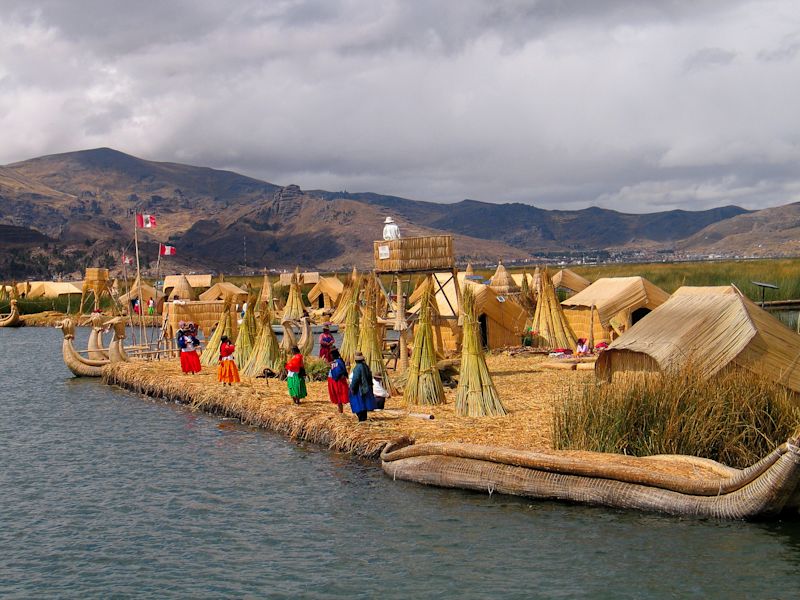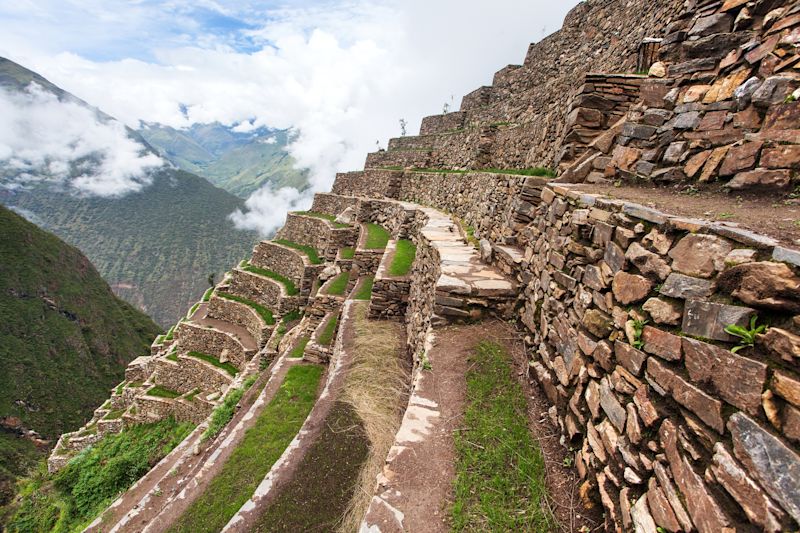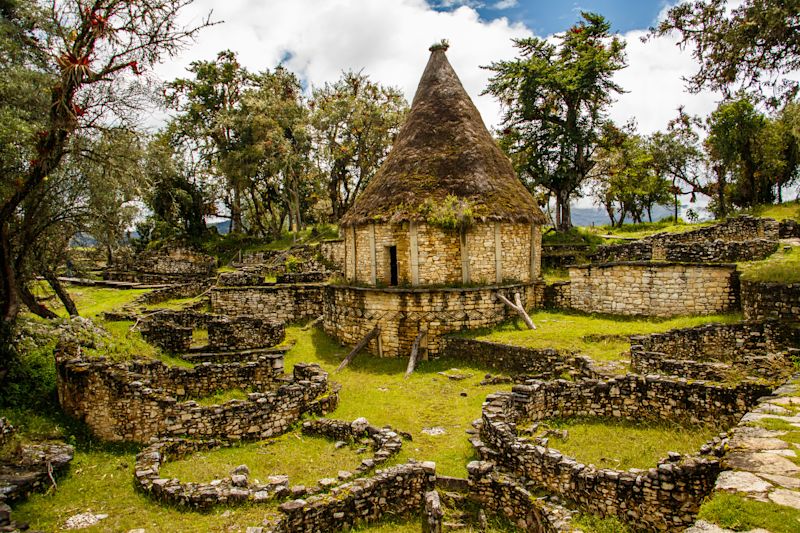Peru is a treasure trove of unique experiences. It's a country that offers more than just the iconic Machu Picchu. From the depths of the Amazon to the heights of the Andes, Peru is a land of contrasts. It's a place where ancient traditions meet modern life.
This guide is for those who seek the extraordinary. It's for travellers who want to delve deeper into Peru's rich culture and stunning landscapes. We'll take you beyond the well-trodden tourist paths. We'll introduce you to the hidden gems of Peru.
Ever thought about exploring the Amazon from Iquitos? It's the largest city in the world that can't be reached by road. Or how about visiting the floating islands of Uros on Lake Titicaca? Here, you can learn about the indigenous Uros people and their unique way of life.
For the thrill-seekers, there's sandboarding in Huacachina. This desert oasis offers an adrenaline rush like no other. And for those seeking a spiritual journey, there's the Sacred Valley. Here, you can participate in a traditional shamanic ceremony.
These are just a few of the unique things to do in Peru. There's so much more to discover.
So, if you're planning a trip to Peru, this guide is for you. It's for those who crave adventure, culture, and natural beauty. Get ready to embark on an unforgettable journey. Get ready to experience the unique things that Peru has to offer.
Welcome to Peru, a land of wonders waiting to be explored.
Discover the uncharted Amazon from Iquitos
A boat plies the waters of the Momom River near Iquitos
Iquitos is a gateway to one of the most biodiverse regions on Earth. Nestled in the heart of the Amazon, it offers adventure beyond imagination.
Reaching Iquitos is an adventure in itself. This sprawling city is only accessible by plane or riverboat. There's no road leading in, adding to its enigmatic allure.
Once there, a river cruise awaits. Journey deep into the Amazon Rainforest and witness a world brimming with exotic wildlife. Keep your eyes peeled for pink river dolphins, a sight both rare and enchanting.
The local culture is as captivating as the natural wonders. Spend time with indigenous communities and learn about their traditional ways. It's a humbling experience that gives you insight into life along the river.
Iquitos is not just about exploration; it’s about immersion. Whether it’s trekking through dense forests or taking a night walk to spot elusive creatures, the Amazon promises a remarkable adventure. Engaging guides will accompany you, sharing their extensive knowledge about the flora and fauna. Their stories and expertise bring the jungle to life, offering perspectives beyond the typical tourist experience. At night, the sounds of the rainforest will be your lullaby. Surrounded by the vibrant symphony of nature, you’ll feel a unique connection to this ancient landscape.
A visit to Iquitos is more than a journey; it’s an opportunity to understand the delicate balance of the Amazon ecosystem. It's an invitation to explore one of the world's last frontiers and become a part of its enduring story.
The floating islands of Uros: a cultural encounter
One of the floating islands of the Uros people on Lake Titicaca
Lake Titicaca is one of the most mesmerising places in Peru. Nestled on its shimmering waters are the unique floating islands of Uros. These islands offer a fascinating glimpse into the lives of the indigenous Uros people.
Crafted entirely from totora reeds, the islands are a marvel of human ingenuity. Walking on them feels like stepping onto a giant sponge, adding a magical element to your visit. These handcrafted wonders provide a living testament to age-old traditions.
The Uros people have lived here for centuries, maintaining a distinct way of life. During your visit, residents welcome you with warmth, eager to share their rich heritage. You’ll learn how they build their homes, boats, and even the islands themselves using totora reeds.
Every visit includes vibrant displays of traditional crafts and daily activities. You can participate in weaving demonstrations or taste local delicacies made from the lake's bounty. It’s a cultural encounter that enhances your understanding of their resilient spirit.
In the tranquil setting of Lake Titicaca, you'll witness stunning sunrises and sunsets reflecting on serene waters. The beauty and tranquillity of the floating islands make for a peaceful retreat. There's a sense of timelessness here that envelops you, leaving a lasting impression.
The Uros Islands are more than just a stop on your Peruvian itinerary. They provide a unique cultural experience that connects you intimately with a world apart.
Sandboarding and oasis life in Huacachina
Huacachina oasis
Deep in the Peruvian desert lies Huacachina, a picturesque oasis surrounded by towering sand dunes. This small village attracts adventure enthusiasts from around the globe. Its serene lagoon, rimmed with lush palm trees, offers a stark contrast to the endless sandy landscape.
Sandboarding in Huacachina is a thrilling experience like no other. Adventurers strap onto sandboards to glide down the massive dunes. Alternatively, dune buggies provide an exhilarating ride over the rippling sand, perfect for adrenaline seekers. The sensation of surfing down a dune, with the wind in your hair and the sun on your back, is unforgettable. Each descent offers a rush of excitement, drawing thrill-seekers eager for more. Beginners and seasoned sandboarders alike will find plenty of challenges amidst the shifting sands.
Beyond sandboarding, Huacachina has a relaxed and welcoming atmosphere. Visitors can paddle in the tranquil oasis or simply unwind with a refreshing drink at a lakeside cafe. The village offers a peaceful retreat where time seems to slow.
Evenings at Huacachina bring stunning sunsets, painting the desert sky in hues of orange and pink. Nightfall invites stargazing, as the clear desert sky reveals countless stars. It's a magical way to conclude a day filled with adventure and relaxation at this unique desert oasis.
A shamanic journey in the Sacred Valley
The Urubamba River runs through the Sacred Valley
Nestled in the Andes Mountains, the Sacred Valley offers more than spectacular vistas. It holds deep spiritual significance for many. Here, travellers can embark on a shamanic journey to connect with ancient traditions and mystic energies.
Participating in a traditional shamanic ceremony can be a transformative experience. Local shamans guide visitors through rituals involving sacred plants, prayers, and chants. Each ceremony aims to promote healing, self-awareness, and a deeper connection with nature.
The ceremonies often include the use of ayahuasca, a plant-based brew with profound effects. Participants seek insight, emotional release, and spiritual growth through this powerful experience. It's essential to approach these ceremonies with respect and an open mind.
Beyond the ceremonies, the Sacred Valley offers a tranquil setting for introspection and renewal. Lush landscapes and flowing rivers provide a serene backdrop for meditation or quiet contemplation. This peaceful environment complements the spiritual journey.
Joining a shamanic retreat in the Sacred Valley is more than just an activity. It's an opportunity to engage with time-honoured traditions and explore deeper aspects of the self. Travellers leave with a renewed sense of purpose, having connected with the region's unique spiritual heritage.
Choquequirao: the other Machu Picchu
Choquequirao is one of the best Inca ruins in Peru
Choquequirao is often overshadowed by its famous counterpart, Machu Picchu. Yet, this magnificent site offers a unique glimpse into the Incan past. Located high in the Andes, Choquequirao is an adventure waiting to be discovered.
Accessing Choquequirao requires a challenging trek. The journey spans rugged trails through stunning landscapes. Hikers navigate steep ascents and descents, crossing diverse terrains that reveal the beauty of the Peruvian countryside.
Unlike the crowded paths leading to Machu Picchu, Choquequirao promises solitude. The site sees far fewer visitors, making it perfect for those seeking peace. Exploring the ruins offers a more intimate connection with the Inca civilisation.
The site itself is vast and intricate. Spread across different levels, it includes temples, terraces, and ceremonial platforms. Visitors can wander among expertly crafted stone structures, absorbing the echoes of history.
For those willing to take the path less travelled, Choquequirao is rewarding. It’s a blend of adventure, history, and breathtaking views. As travellers stand among the ancient stones, they discover the allure of Peru's hidden gem.
Salt pans of Maras: an ancient tradition
The salt pan of Maras
The salt pans of Maras are a spectacular sight. Nestled in the Sacred Valley, these salt mines date back to pre-Incan times. Over 3,000 pans cover the mountainside in a striking display of human ingenuity.
Each pan is a shallow pool that catches salty water from an underground spring. As the water evaporates, salt crystals form, ready for harvest. This method of salt extraction has remained unchanged for centuries.
Local families manage the salt pans. The tradition and responsibility of salt production pass down through generations. Visiting Maras, you can witness how communities preserve these ancient practices.
The shimmering salt flats create a dramatic contrast against the surrounding landscape. Maras is a photographer’s dream, offering captivating views at every turn. The sunlit salt pools change colours with the light, providing endless visual interest.
Touring the salt pans is both educational and scenic. Visitors learn about the cultural and historical significance of the site. With sweeping vistas as a backdrop, the experience of Maras is both enlightening and unforgettable.
Culinary delights: a tour of Lima's gastronomy
Limaoan cuisine is among the world's finest
Lima is a paradise for food lovers. Known as the gastronomic capital of South America, it offers an unparalleled culinary experience. Travellers can indulge in diverse and vibrant flavours throughout the city.
The streets of Lima boast a rich array of delectable offerings. From high-end restaurants to bustling street vendors, there’s something for every palate. Ceviche, a fresh seafood dish, reigns supreme among local delicacies.
Taking a food tour in Lima lets you explore its culinary spectrum. Guided tours often include popular markets and famed eateries. They provide a firsthand look at the ingredients and traditions shaping Peruvian cuisine.
Peru’s multicultural history is the secret to its rich culinary tapestry. African, Asian, and European influences intermingle with Indigenous flavours. This fusion creates dishes full of unexpected and delightful complexity.
Dining in Lima is more than just eating; it's an experience of culture. Many restaurants offer not just food, but stories and history. Exploring Lima's culinary scene offers both nourishment and an encounter with Peru's heart.
Bird watching in the majestic Colca Canyon
Tourists at a lookout point in Colca Canyon
Colca Canyon is a paradise for bird enthusiasts. It's one of the world's deepest canyons, offering a unique birding experience. Its dramatic landscapes host a diverse array of avian species. Among these species, the Andean condor stands out. With a wingspan over 10 feet, it's one of the largest flying birds. Early morning is the best time to witness these majestic creatures soar.
Various guided tours are available to enhance your bird-watching adventure. Local guides offer invaluable knowledge about the region's flora and fauna. They lead you to prime spots for observing the canyon's diverse birdlife.
The canyon's biodiversity extends beyond birds. You'll find an array of flora and small mammals living in harmony. The spectacular scenery adds layers of awe to any bird-watching excursion.
Besides birds, the Colca Canyon offers cultural attractions. Explore nearby villages to meet local communities. Their traditional way of life enriches your visit, adding depth to nature's spectacle.
Pachamanca: the earth oven experience
A pachamanca ceremony
Pachamanca is more than a meal; it's a cultural ritual deeply rooted in Andean tradition. This ancient cooking method uses hot stones to roast a variety of meats and vegetables in the earth. The word pachamanca means 'earth oven' in Quechua, reflecting its unique preparation style.
Preparation begins by digging a hole in the ground, then heating stones on a wood fire. Once hot, these stones are layered with marinated meats, potatoes, corn, and Andean herbs. After covering the pit, the ingredients steam for several hours, resulting in a feast full of rich, earthy flavours.
Experiencing a pachamanca feast offers a taste of history. Many Peruvian communities hold this tradition during festivals and family gatherings. Participating in this event provides insight into the communal spirit and agricultural practices of the Andes.
Several local tours offer visitors the chance to partake in a pachamanca. These tours often include demonstrations of the cooking process, ending with a shared meal. Visitors leave with a deeper appreciation for the harmonious relationship between nature and culture in the Andes.
Enjoying pachamanca in its authentic setting is truly unforgettable. This experience embodies Peru's rich cultural tapestry, combining culinary arts with ancient rituals. It captures the essence of community and tradition, leaving lasting memories.
Surf's up in Mancora: Peru's beach paradise
Surfers enjoy the waves off Mancora
Mancora is a hidden gem along Peru's northern coast, known for its stunning beaches and year-round sunshine. This laid-back beach town offers an ideal escape for those seeking sun, sea, and surf. Mancora's warm waters and consistent swells make it a top spot for surfing enthusiasts.
Surfing in Mancora caters to all skill levels, from beginners trying their first wave to seasoned pros seeking a challenge. Numerous surf schools and rental shops line the beach, making it easy to get started. Instructors are friendly and experienced, ready to help anyone ride the waves confidently.
Beyond surfing, Mancora boasts a vibrant nightlife and a thriving local scene. Beachfront bars serve tropical cocktails as the sun sets over the Pacific. Visitors can enjoy fresh seafood at local restaurants, tasting dishes like ceviche made from the day's catch.
For those looking to unwind, there's more to explore beyond surfing. The town offers relaxing spa treatments and yoga classes. Or, take a leisurely stroll along the beach at sunrise, experiencing the tranquil beauty of the coastline.
Mancora's natural beauty and laid-back atmosphere create the perfect beach getaway. Whether catching waves or soaking up the sun, visitors find it hard to leave. This coastal paradise invites travellers to relax, recharge, and embrace the simple joys of life by the sea.
Kuelap: the Machu Picchu of the north
Ruins of Kuelap
Kuelap stands as one of Peru's most impressive archaeological sites, often overshadowed by its more famous cousin, Machu Picchu. Nestled in the cloud forests of northern Peru, Kuelap offers a journey into the heart of the Chachapoyas civilisation. This ancient fortress is a marvel of engineering and mystery.
Constructed between the 6th and 16th centuries, Kuelap boasts massive stone walls that stretch over 600 meters long. Within these walls, more than 400 circular stone houses hint at the thriving community that once inhabited the area. Each stone seems to tell a story from a forgotten world.
Reaching Kuelap involves a scenic journey through rugged landscapes, either by foot or via a modern cable car. The thrilling ride provides sweeping views of the lush Utcubamba Valley. The approach is a reminder that the adventure is just as remarkable as the destination.
Wandering through the ruins, visitors can imagine life in a lost era. The fortress, perched at 3,000 meters above sea level, commands breathtaking views. Mist often shrouds the surrounding mountains, adding to the site’s ethereal charm.
Kuelap remains less crowded than Machu Picchu, offering a more peaceful exploration. Its solitude allows travellers to connect deeply with history and nature. For those willing to venture north, Kuelap promises an unforgettable experience of Peru's rich cultural tapestry.
Over the Nazca Lines: a flight into mystery
Aerial sunset view of some of the Nazca Lines
The Nazca Lines, enigmatic and monumental, captivate the imagination of all who behold them. These enormous geoglyphs, etched into the arid desert of southern Peru, span stretches that can only be fully appreciated from the sky. Their origin and purpose remain one of Peru's most intriguing mysteries.
Created by the Nazca culture over 2,000 years ago, the lines form shapes of animals, plants, and geometric designs. Despite countless theories, the exact reason for their creation eludes historians and archaeologists alike. Some suggest they hold astronomical or religious significance.
Visiting the Nazca Lines typically involves taking a flight in a small aircraft, providing an aerial perspective on these ancient wonders. From above, the figures become clear: a hummingbird, spider, and monkey, among others. The experience is as mesmerising as it is surreal.
The desolate environment of the Nazca Desert has preserved the lines remarkably well. The stark contrast between the reddish desert floor and the precise white lines leaves viewers in awe. Each flight opens a window to the past, inviting speculation and wonder.
For those intrigued by ancient civilisations and their secrets, the Nazca Lines offer a unique glimpse into a complex world. This aerial adventure is more than a tourist attraction; it's an invitation to ponder human creativity and ingenuity. As you soar above the desert, prepare to question what you know about history and art.
Rainbow Mountain: a trek to the colours of the Earth
Trekkers make their way to the top of Rainbow Mountain
Rainbow Mountain, or Vinicunca, is one of Peru's most vibrant natural wonders. This stunning peak, known for its striking stripes of colours, resembles a painter’s palette. These colours are due to the rich mineral deposits in the region.
Reaching Rainbow Mountain requires a day trek at high altitude, offering a genuine adventure for trekkers. The journey takes you through scenic Andean landscapes, grazing llamas, and traditional Quechua villages. Trekkers should be well-prepared for the thin air and changing weather.
Upon arrival at the summit, the view is nothing short of breathtaking. The panorama of colourful ridges against the backdrop of the Andes is a reward for the arduous climb. The vibrant hues – reds, yellows, and greens – stand starkly against the blue sky.
The colours of Rainbow Mountain are formed by mineralogical processes over millions of years. Iron oxide gives the red, while other minerals paint yellow and green. Understanding these processes adds another layer of appreciation for nature’s artistry.
For those seeking a trek that combines physical challenge with visual awe, Rainbow Mountain is unmatched. This destination not only captivates photographers but also calls to nature lovers and adventurers. Experiencing its majesty firsthand leaves a lasting impression, adding depth to any Peruvian journey.
Inti Raymi: the Festival of the Sun in Cusco
A dancer participating in Inti Raymi
Inti Raymi, the Festival of the Sun, is Cusco's most vibrant celebration. This annual event, held every June 24, honours the Inca Sun God, Inti. It marks the winter solstice and the coming year in the Southern Hemisphere.
During Inti Raymi, Cusco springs to life with colour, music, and dance. Thousands gather in the ancient city to witness this grand reenactment of Inca traditions. The main celebration takes place at Sacsayhuamán, a historic fortress outside Cusco.
Participants dress in elaborate costumes representing Incan deities and royals. The traditional garb, vibrant and detailed, adds authenticity to the spectacle. This reenactment offers a glimpse into the spiritual and cultural heritage of the Incas.
For travellers, attending Inti Raymi is an opportunity to connect with Peru's rich history. It provides a deep understanding of Incan rituals, beliefs, and community. The festival fosters a deeper appreciation for the cultural continuity of the Andes.
Inti Raymi is more than a reenactment; it's a celebration of life, nature, and heritage. The communal spirit makes it a memorable experience for visitors and locals alike. Experiencing Inti Raymi is like stepping back in time and witnessing the glory of the ancient Inca Empire firsthand.
Pisco tasting: discovering Peru's national spirit
A bartender pouring pisco sour
Pisco is Peru’s national pride and a must-try for any visitor. This aromatic grape brandy is central to the country's culture and gastronomy. A pisco-tasting tour offers an insider's view into this cherished spirit's rich heritage.
Distilleries across the Ica region open their doors to curious travellers. Here, you can learn about the art of pisco-making from vine to glass. Tours often begin in the vineyards, where growers passionately discuss grape varieties essential to pisco production.
The tasting experience often feels personal and informative. Expert distillers guide you through the nuances of different pisco types. The varieties range from pure pisco, made from a single grape type, to acholado, a blend of several grapes. Each sip tells a unique story.
Pairing pisco with traditional Peruvian dishes enhances its flavours. Many tours offer culinary pairings that elevate the tasting experience. You might sample a tangy ceviche or creamy causa alongside your pisco, adding depth to the experience.
Finally, the classic pisco sour cocktail is a delightful way to enjoy this national spirit. Its smooth texture, combined with lime juice and a hint of bitters, is refreshing. For those who enjoy mixology, learning to make a perfect pisco sour can be one of the memorable activities in Peru.
Conclusion: your unforgettable Peruvian adventure
Peru is a land of contrasts and unparalleled diversity. Each experience, from the jungles to the sea, holds its magic. Every region you explore provides a glimpse into the rich tapestry of Peruvian culture and nature.
Your journey through Peru can be transformative. From ancient ruins and culinary delights to breathtaking landscapes, there are endless adventures. The memories crafted from these unique activities will stay with you long after you leave its shores.
Embrace the spirit of exploration that Peru offers. Whether you choose thrilling adventures or peaceful escapes, the vibrancy of this country is boundless. Peru awaits with treasures to uncover and stories to discover. Let your Peruvian adventure be one that reshapes your travel experiences.


















